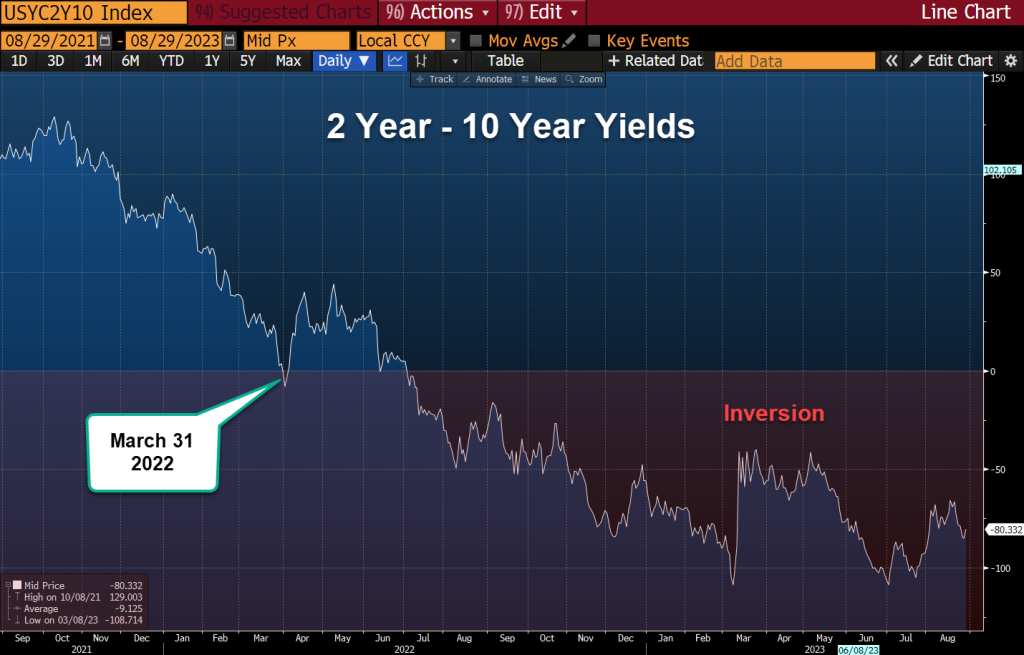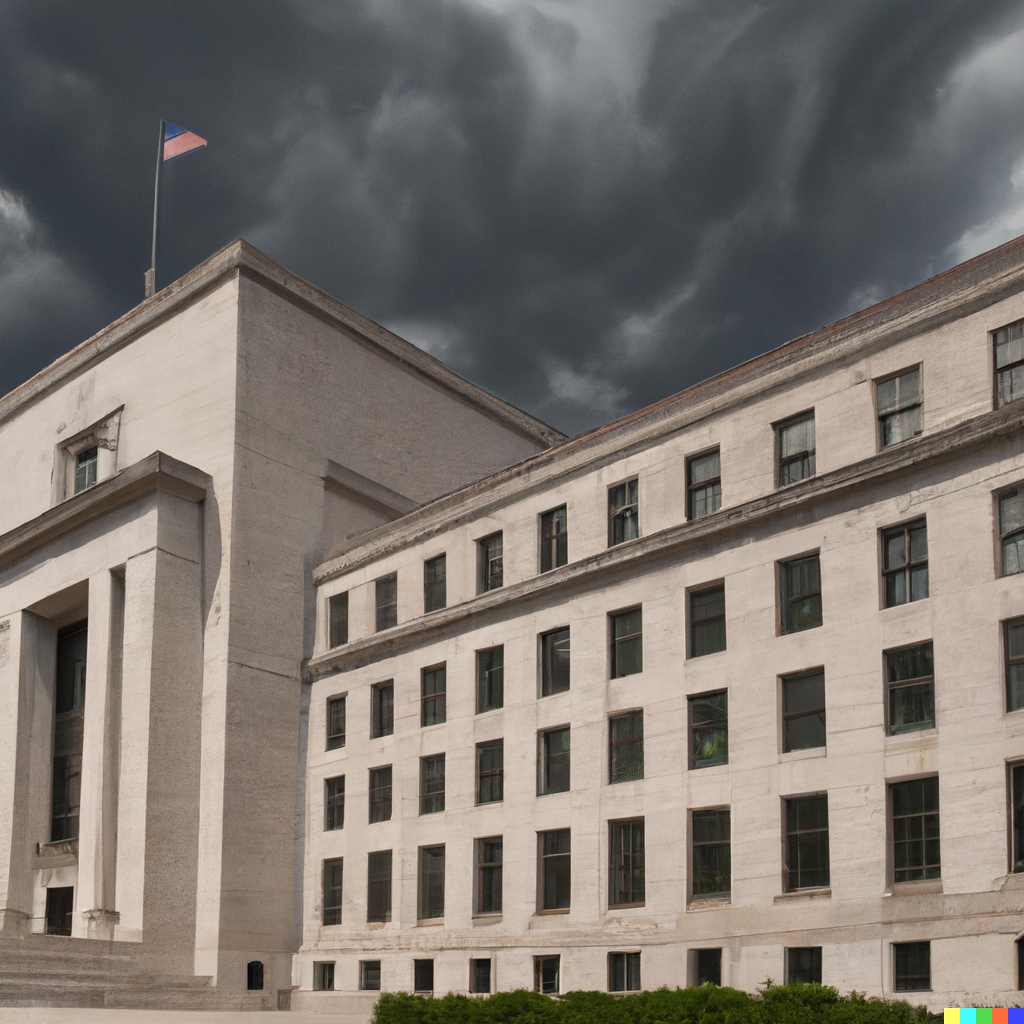 August
31
August
31
Tags
Time to get “Real” about the coming recession
By David Nelson, CFA
Traveler’s usually follow in the footsteps of those who have successfully navigated the journey before them. Even Dorothy along with a few friends and her trusty dog Toto had the Yellow Brick Road.
Investors are no different. We stick to the path as long as we can but have to be prepared to alter course when the weather turns. With map in hand confident we had sidestepped a recession, a recession mind you that has followed every yield curve inversion in modern times it suddenly hits you. We’ve been reading the maps all wrong.
The storm isn’t behind us, it’s dead ahead.
Welcome to the Money Runner, I’m David Nelson.
Ever since we first started seeing evidence of a developing yield curve inversion investors have been confident that it was only a matter of time before the inevitable recession would take hold.

Bloomberg Data
The yield curve first inverted in March last year before falling to the steepest inversion since the early 80’s. An inverted yield curve is really only a symptom of a bigger problem. However, it can act as an early warning sign of bad weather ahead.
 The real pain hits as the Fed slams on the brakes to slow down the economy, usually in a desperate effort to put the inflation genie back in the bottle. Last year with inflation ramping up to the worst levels in 40 years the Fed had to get aggressive. Starting in March last year the Fed hiked rates at the fastest pace in decades. The delayed start only added to the challenge.
The real pain hits as the Fed slams on the brakes to slow down the economy, usually in a desperate effort to put the inflation genie back in the bottle. Last year with inflation ramping up to the worst levels in 40 years the Fed had to get aggressive. Starting in March last year the Fed hiked rates at the fastest pace in decades. The delayed start only added to the challenge.
Once they begin the process, the job of the FOMC is to get the Fed Funds rate into restrictive territory with a goal of slowing down economic activity. Almost always what follows is rising unemployment, slowdowns in key industries and occasionally something far worse like a financial crisis.
The Fed keeps hiking until something breaks. Isn’t that how the saying goes? Seventeen months later Wall Street is singing a different tune. Many believe the Fed has or is close to engineering the elusive soft landing. It’s the Holy Grail of Fed policy. Come in like a bull in a China shop but somehow miraculously avoid creating a disaster on your watch.

Bloomberg Data
Inflation is down dramatically from the highs last year; employment is still robust not to mention there are still too few workers to fill the available jobs in the workforce. It would seem that Powell is about to land on the aircraft carrier, salute the troops declaring “mission accomplished.”
Well, we haven’t heard those words from Jay and maybe this is the reason.
We’ve been looking at data and probabilities built on the concept of normalized monetary and fiscal policy.
Does anything seem normal about the post Financial Crisis? Zero interest rate policy along with debt and deficits few thought were even possible and certainly not sustainable.

Bloomberg Data
On average 15 months following a yield curve inversion a recession begins. Since 1978 the range has been from as little as 6 to as many as 22 months.
Well, here we are in August, coming up on 17 months since the yield curve inverted and right on cue many on Wall Street are starting to discuss the idea that the Fed has engineered a soft landing. While Jay and company aren’t ready to take a victory lap Wall Street is gearing up for the coronation.
Who can blame them? Inflation readings are all in the right direction. Preliminary GDP data is heading higher and until proven otherwise employment is stronger than ever with unions seemingly in control ready to demand wages and benefits few thought achievable.
What is the street getting wrong?
Investors have convinced themselves that after enduring 11 rate hikes, a full 525 bps of tightening and still no recession we’re out of the woods. Add the fact that we are now 16 months into a yield curve inversion and still no signs of an economic slowdown, some are asking, has the Fed pulled off the impossible?
Time to get Real!

Bloomberg Data
When we shift the focus to the Fed Funds Real rate instead of looking at the nominal rate, we get a better picture of what’s taking place on the ground. (Real Rate = nominal rate – inflation)
While the Fed has been hiking rates since March last year it took a full 12 months and a bear market just to hit zero in real terms. All in, the Fed has only been in restrictive territory for just a few months.
Right On Cue

Bloomberg Data
Almost to the day real rates crawled above zero, banks started rolling over with Silicon Valley and Signature Banks first to fall. A few months later retailers like Macy’s are telling us the consumer is struggling and delinquency rates are rising.
Ok, let’s go back to the charts and add the spread between 2 year and 10-year yields alongside the official U.S. recession bands. Now add the Real Fed Funds Rate and suddenly it all comes into focus.

Bloomberg Data
For most of the history the Fed Funds Real Rate was within striking distance of being positive or restrictive in policy at the start of a hiking cycle. However, this time our starting point was (-800) basis points. The Powell Fed wasn’t just accommodative they were pouring gasoline on the fire. In fact, they were still buying U.S. treasuries right up until March last year.
The Fed has only been in restrictive territory for just a few months. Put in that context with the yield curve still inverted, expect the data to rollover triggering a recession. Take your pick on the timing but my call is no later than this time next year.
Unprecedented monetary and fiscal policy helped keep the consumer and the economy afloat and only now as those policies ease and the cost of capital rises will the train start to slow. Many like former bond king Bill Gross are warning that Americans could run out of their pandemic savings later this year paving the way to recession.
JOLTS

Bloomberg Data
Wall Street is celebrating Tuesday’s JOLTS data as a signal the Fed will not have to raise at the next meeting. I don’t think it makes any difference. Unless they start cutting right now I expect the process to unfold. The JOLTS data is really confirmation that Fed policy is indeed slowing the economy.
As for the street ready to celebrate the soft landing and a mission accomplished. Let’s remember, the hero in this story denied there was even a fire until the house started burning down.
*The above is a transcript from David Nelson’s podcast The Money Runner